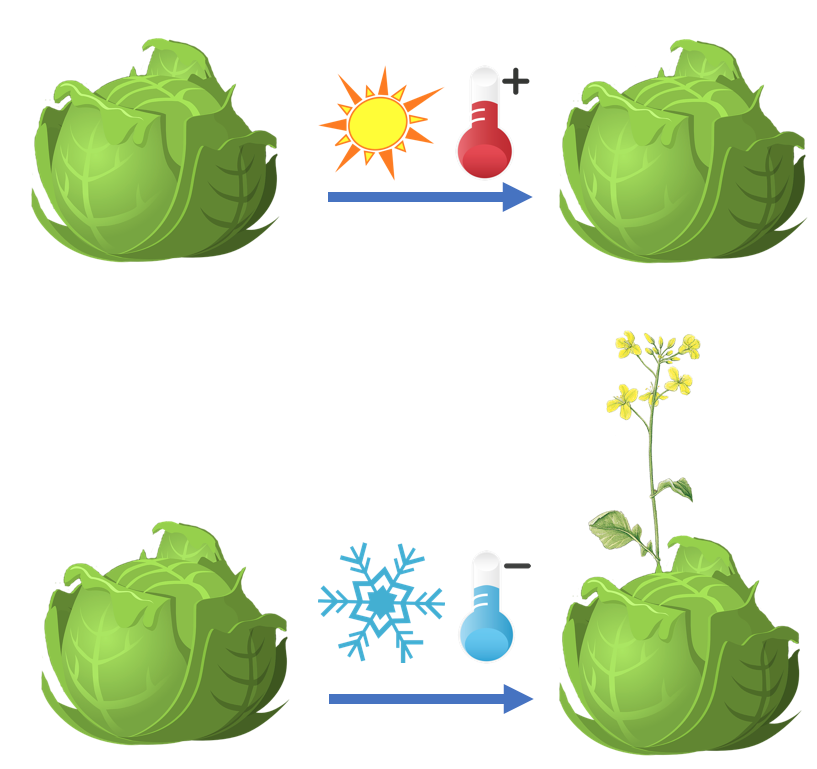A plant’s transition from vegetative growth to reproductive/flowering growth is a complicated process. In order for a plant to complete its life cycle and produce viable seeds, flowering must occur under conditions that encourage seed production. Plants are able to detect a variety of internal and environmental signals that influence floral development. Internal signaling is via production and diffusion of plant hormones, while examples of environmental signals include seasonal changes in temperature and photoperiod (length of day). These signals affect the expression of reproductive/flowering genes that induce the development of reproductive structures, i.e. flowers.
Why do some plants require vernalization?
To ensure that reproductive development and seed production occur in favorable conditions, many plants require vernalization to induce flowering. Vernalization refers to the initiation of plants’ reproductive growth following exposure to an extended cold period. In nature, this requirement of cold exposure prevents a plant from flowering during the cooler autumn and winter months and promotes flowering during the favorable conditions of spring and summer.
Different plants require different conditions to flower (usually traceable to the environment in which a plant is native). Some plants must pass a threshold in accumulation of biomass, some plants require patterns of change in temperature, and some plants require patterns or change of photoperiod.
Flowering and Fast Plants – No Vernalization Required
In Wisconsin Fast Plants, many of the traits that influence delay of flowering have been selected against. In other words, Wisconsin Fast Plants have been selected to develop flowers, produce seeds, and complete their life cycle without the requirement of photoperiod or temperature signals. Thus, Fast Plants do not require vernalization to flower.
When grown under standard conditions of 68-72F and continuous fluorescent lighting, Wisconsin Fast Plants will first have open flowers about 14 days after planting. Those of us who have experimented with different environmental factors such as fertilizer concentration or growing temperature may have observed small variation in the timing of floral development.
Though Wisconsin Fast Plants (Brassica rapa) do not require vernalization to flower, some of its close relatives do! For example, cabbage (Brassica oleracea) grows vegetatively to produce the cabbage head that we use as vegetable foodstuff. But, if the cabbage head is not harvested and is exposed to an extended cold period (the specific length and temperature requirements vary between different cultivars), a flowering stalk will sprout out of the cabbage head which marks the transition to reproductive development and the plant’s ability to produce seeds and complete its life cycle.

Cabbages (Brassica oleracea) require a cold period to induce flowering. A cabbage plant that is not exposed to a cold period will not produce flowers. Therefore, a cold/winter period is required for cabbage to produce seed and complete its life cycle.
Experiment with vernalization — cooler than you think!
For those of us who are interested in experimenting with vernalization, all it takes is a trip to the garden or your local grocer!
Check out this activity: A Biological Riddle in our Fast Plants Digital Library to learn how to conduct your own vernalization experiments!
Many Brassica vegetables can be induced from vegetative to reproductive/flowering after a few weeks in the refrigerator. For an interesting experiment, try exposing multiple turnips (Brassica rapa) to cold period of different lengths, perhaps a range of 3 weeks to 8 weeks. You will likely notice trends in reproductive development between the different treatments! For bonus points, you can even cross-pollinate your flowering turnips with your Fast Plants!

